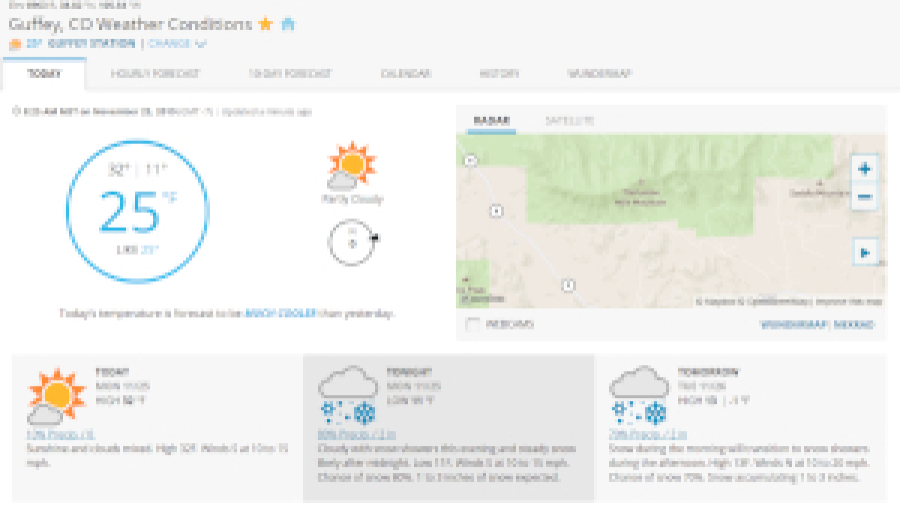We had a chance to visit the property for the Thanksgiving weekend. It was nice to be there and enjoy some sunny weather, as well as get several things done. It’s funny…when we plan a trip to Guffey, I think I will have plenty of time to read, catch up on posts, etc. NOT! It usually seems like we’re busier there than we are at home! Now that we’re back in Wellington, I’ll have to try to do some catching up. We did manage to get our weather station up and running (it turned out that the computer had crashed), so if you wish to see our current weather conditions, look to the right.
Visiting the RV, without living in it full time has its challenges! We’ve been prepared for this, and don’t plan to visit quite as frequently in the winter. One thing we need to do at this point is haul our water, since we don’t yet have a well. We got a couple of 300 gallon water tanks, so soon as we unpack the truck, Tim takes one of these tanks to Guffey (about 7 miles from us), to fill it up at the fire station, where the water is free. He brings it back, fills the RV (100 gals), then fills our other tank (near the horses’ pen) with the remainder, so we can water the horses. It’s kind of a drag, but do-able, and we’re getting used to the routine.
Since it is winter and we are not at the RV full time, we need to winterize it each time we leave. This means draining all the water, not leaving anything in the cupboards that may freeze, etc. We did all that the last time we left, however it was VERY cold for a few days (below zero overnight and never above freezing during the day). When we returned on Friday, filled the tank and turned on the water pump, we found that a couple of the plumbing parts had frozen and cracked. We had quite a bit of water to mop up in a hurry. Tim managed to remove the cracked water filter and accumulator and bypass them so we could have water, but the pressure was quite low, and the pump didn’t seem to be working properly. After spending a good deal of time Friday on this, we had to spend half our day Saturday driving to Canon City to the nearest RV parts store, an hour away. We were able to get the parts we needed and learned some more things about winterizing. This included the purchase of some food-grade antifreeze we can put in the system as part of the winterization process. So, now we believe we’re set.
The last time we left Guffey, I had guessed that maybe things wouldn’t freeze if I left them inside the refrigerator, which was turned off. I thought that it would insulate things from freezing, so I left a few things in it. Well, it was so cold, that the things in the refrigerator did freeze. Fortunately, there wasn’t much, and the only things damaged were a couple of cans of soda. Now I know that if cold enough, the refrigerator does not insulate against freezing. This trip, I only left things in the refrigerator that will survive if frozen.
The other thing we found upon returning to Guffey was some mouse puckies. We knew there was a possibility mice might find their way in to the RV and had thought about getting some ultrasonic mouse repellers, which we’ve heard work well. We didn’t get them previously, because we wouldn’t have known whether they worked or if there were just no mice getting in. Now that we know they are finding their way in, we purchased some of these ultrasonic devices, and left them plugged in, so hopefully next time we won’t see evidence of mice.

















 We installed our own weather station, broadcasting to Weather Underground. It’s been fun to compare the weather at our new property to Wellington weather. We are SO looking forward to living in Guffey.
We installed our own weather station, broadcasting to Weather Underground. It’s been fun to compare the weather at our new property to Wellington weather. We are SO looking forward to living in Guffey. 
